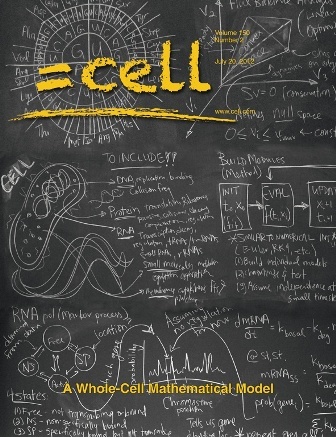Human CCDS Release 11 Issued
Wednesday, October 31, 2012
This update adds 1138 new and 2 reinstated records which add sequences for 93 genes to the Human Consensus CoDing Sequences (CCDS) dataset. CCDS Release 11 includes a total of 27,511 CCDS IDs that correspond to 18,535 Gene IDs.
The NCBI, Ensembl, and Sanger (Havana) annotation of the human reference genome (assembly GCF_000001405.21, NCBI annotation release 103, Ensembl annotation release 68) was analyzed to identify additional coding sequences (CDS) that are consistently annotated.
CCDS data is available in the CCDS web site and FTP site and will become available in the collaborators' genome and/or gene browser web sites according to each browser's update cycle. See the Releases & Statistics report for details.
NCBI's Genetic Testing Registry at AMP's Annual Genomic Medicine Meeting
Wednesday, October 24, 2012
The Head of the NIH Genetic Testing Registry is presenting and is available for questions at the Association for Molecular Pathology's Annual Meeting on Genomic Medicine in Long Beach, CA from October 25-27, 2012.
Tuesday, October 23rd: GeT-RM Panel Meeting 2012 at 3-5pm in the Naples Ballroom
- CDC/NCBI Clinical NextGen Sequencing Reference Material Project Open Forum
- Demonstration of NCBI's GeT-RM browser and preliminary data analysis
Wednesday, October 24rth: Open Forum at 8am-6pm in the Sienna room
- Come by and get help registering your lab with the NIH Genetic Testing Registry!
NCBI Genetic Counselors at the National Society for Genetic Counselors' Meeting
Monday, October 22, 2012
NCBI Genetic Counselors are presenting at the National Society for Genetic Counselors' 2012 Annual Education Conference in Boston, MA from October 24-27, 2012.
Plenary Session: "Clinical Genetic Resources at NCBI"
Thursday, October 25th @ 4:30-5:15pm in Room 302/304/306
- Discover how to become a power user of the GTR with MyNCBI and other navigation tips.
- Demonstrate how to find a test by a variant, and identify the variant’s clinical significance.
- List at least four databases at NCBI of use to genetics professionals.
Learn more about the Genetic Testing Registry at two Open Forums:
- Thursday, October 25 @ 7-10pm in Room 208: "Get help to register your lab and tests"
- Friday, October 26 @ 7-10pm in Room 205: "Learn to navigate the Site"
New dbSNP Release for Mouse and Cow
Tuesday, October 16, 2012
A new dbSNP build 137 has been released for Mouse and Cow with data indexed in Entrez, available by FTP, and mapped to genomic assemblies.
New Mouse information:
- Mapped Assemblies on the FTP site: GRCm38 (GCF_000001635.20) and Mm_Celera (GCF_000002165.2)
- New RS as shown in Entrez: 54562956
- Total RS as shown in Entrez: 70036850
New Cow information:
- Mapped Assemblies on the FTP site: Btau_4.6.1 (GCF_000003205.5) and Bos_taurus_UMD_3.1 (GCF_000003055.4)
- New RS as shown in Entrez: 5522517
- Total RS as shown in Entrez: 26539698
NLM-Funded Investigator Creates First Complete Computerized Simulation of an Organism
Wednesday, October 10, 2012

This ground-breaking achievement in computational biology earned the cover of the July 20, 2012 issue of Cell and represents a "transforming approach to answering questions about fundamental biological processes," according to James M. Anderson, MD, PhD, director of NIH's Division of Program Coordination, Planning and Strategic Initiatives. The single-cell bacterium was chosen for its relative simplicity; it has 525 genes, compared to E. coli's 4,288. The model runs on 128 computers and:
- Describes the life cycle of a single cell from the level of individual molecules and their interactions
- Accounts for the specific function of every annotated gene product
- Accurately predicts a wide range of observable behaviors
In a July 20, 2012 article in The New York Times, Covert described the object-oriented approach his team used to design the 28 separate modules that represent M. genitalium's biological processes: "The major modeling insight we had a few years ago was to break up the functionality of the cell into subgroups, which we could model individually, each with its own mathematics, and then to integrate these submodels together into a whole."
This approach uses more than 1,900 parameters observed experimentally and reported in 900+ articles, and integrates them in a manner that enables understanding and provides direction for real-world experiments. "If you use a model to guide your experiments, you're going to discover things faster. We've shown that time and time again," said Covert. NIH's Anderson is clear on the significance: "Comprehensive computer models of entire cells have the potential to advance our understanding of cellular function and, ultimately, to inform new approaches for the diagnosis and treatment of disease."
Reference:
Karr JR, Sanghvi JC, Macklin DN, Gutschow MV, Jacobs JM, Bolival B Jr, Assad-Garcia N, Glass JI, Covert MW. A whole-cell computational model predicts phenotype from genotype. Cell. 2012 Jul 20;150(2):389-401. Available from: http://www.sciencedirect.com/science/article/pii/S0092867412007763 PubMed PMID: 22817898
To learn more about the NLM Extramural Programs (grants) Division: http://www.nlm.nih.gov/ep/ep-overview.html
Try the new PubChem Classification Browser!
Tuesday, October 09, 2012
Use the new PubChem Classification Browser to search for PubChem data using a specific classification term from MeSH, Gene Ontology, KEGG, ChEBI or LIPID MAPS.
The Help Document includes examples of how the PubChem Classification Browser can be used to find PubChem Compounds classified as methotrexate as well as for identifying PubChem BioAssays that have tested protein targets involved in DNA repair.
New PubChem Widgets: embed PubChem tables in your own web pages!
Monday, October 01, 2012
Show PubChem data your way using the new PubChem Widgets. Display concise tables of patents, bioactivities, and literature from PubChem on your web pages. See the (online help document) for details and examples.
Publication Details
Copyright
Publisher
National Center for Biotechnology Information (US), Bethesda (MD)
NLM Citation
NCBI News [Internet]. Bethesda (MD): National Center for Biotechnology Information (US); 1991-2012. NCBI News, October 2012.